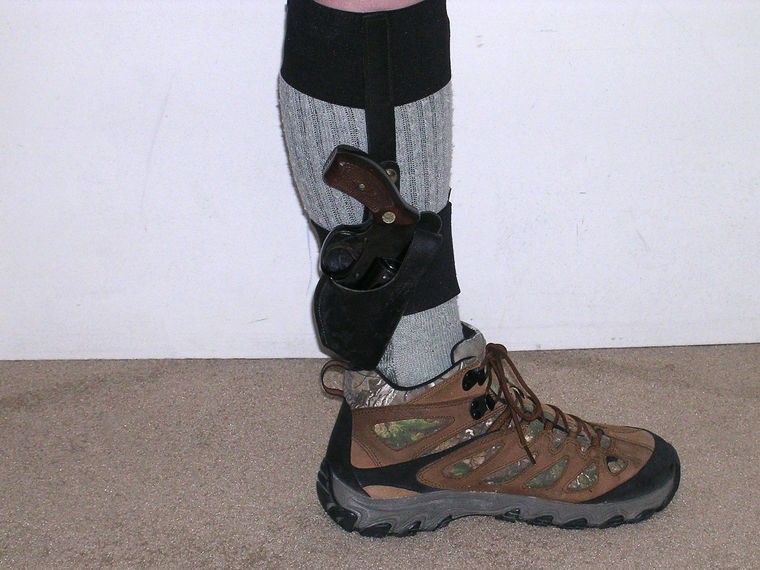Two weeks ago, I wrote a column where I listed Ken Hackathorn as one of several top instructors who advocated appendix carry. Ken contacted me and made it clear that he does not advocate appendix carry nor does he carry appendix style.
I made a mistake in not checking my source more carefully. My apologies to Ken Hackathorn, who wrote me a very kind letter to set the record straight.
During the 25 years I lived in College Station, Texas, I was pretty well-acquainted with many of the officers on the College Station Police Department, the SWAT team, and the Brazos Valley Drug Task Force.
Some of the police officers were allowed to carry backup guns subject to department approval and had to qualify with them twice a year. The SWAT team members also carried backup guns when on SWAT team assignments. The Brazos Valley Drug Task Force members all carried backup guns.
Quite often, the backup guns they carried were the same brand and caliber as the duty pistols they normally carried, although often in a smaller frame size.
Glocks were the most common pistols carried in large, medium and compact frame semi-auto pistols by the police force and its SWAT team. The Brazos Valley Drug Task Force carried SIG Sauer pistols in .357 Sig, which the Texas Department of Public Safety adopted in 1996, along with any long guns they were using.
As far as I could tell, the two most common places backup guns were carried were in ankle holsters or in the small-of-the-back holsters. I’ll address small-of-the-back next week.
One of the court judges in College Station went to the same church I attended, and he wore a small semi-auto handgun in an ankle holster. In Texas, they referred to them as boot guns, whether they clipped onto the cowboy boots that he and other Texans were known to wear, or were worn around the ankle itself.
He even wore his gun to church. He wore an ankle holster that had a calf retention strap so the gun wouldn’t eventually work it’s way down into the boot where it would have been difficult to retrieve.
We used to kid him a little by telling him that in the time it took him to draw his pistol by standing and jumping up and down on one leg, the gun fight would be over and he would be the loser.
However, there are a good number of professionals and regular folks alike that prefer to carry a small J-Frame size revolver or small semi-auto pistol in an ankle holster. Most of the professionals who carry a small handgun in an ankle holster carry it as a backup to their primary handgun, which is usually worn on the strong side hip at 3 or 4 o’clock.
There are several reasons non-professionals might carry in an ankle holster, including Hollywood hype that makes ankle holsters seem “cool.”
1. Let’s start with the simple. If you are a right-handed person, you would wear the gun on the inside of your left ankle, allowing you to reach down with your right hand and draw the gun.
2. When drawing the gun, bend slightly at the knees, with your support hand pulled up your pant leg while your shooting hand accesses the gun. No hopping around on one leg please.
3. Ankle carry isn’t as comfortable as you might think. It isn’t bad, but if you want to carry a gun with as little discomfort as possible, you will probably prefer the strong side, outside-the-waistband carry.
4. Consider a calf-retention strap model of ankle holster to keep the gun from ending up in your shoe.
5. It takes longer to draw the gun. Drawing from inside-the-waistband or outside-the-waistband is quicker since you don’t have to bend down to access the gun.
6. Guns carried in an ankle holster tend to collect more dirt and debris. Clean the gun at least once a week to keep it functioning properly.
The one situation in which wearing an ankle holster really makes sense for non-professionals is while driving. So if you take a lot of long road trips, ankle holster carry may be for you.
If you do opt for ankle carry, remember you want to carry a small, lightweight gun. If you carry a full-size revolver or semi-auto handgun in ankle carry, you will begin to regret that decision very quickly. J-Frame-size revolvers and compact models of semi-auto pistols are the most comfortable to wear in ankle holsters.
Carrying a handgun in an ankle holster shouldn’t be completely dismissed. It works better for some than others. One has to give a great deal of thought to their priorities and spend some time in practicing the techniques that ankle carry requires in order to decide if ankle carry meets those priorities.
Using a good quality holster, keeping the gun clean and functional and practice are essential to ankle carry.
Smokey Merkley was raised in Idaho and has been hunting since he was 10 years old. He was a member of the faculty of Texas A&M University for 25 years. There he taught orienteering, marksmanship, self-defense, fencing, scuba diving and boxing. He was among the first DPS-certified Texas Concealed Handgun Instructors. He can be contacted at mokeydo41245@hotmail.com.



